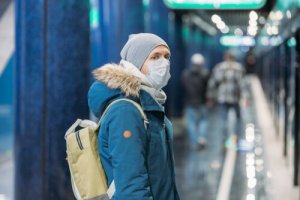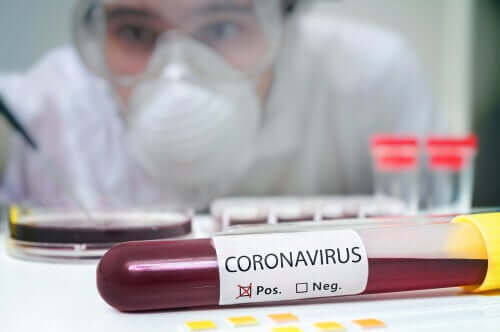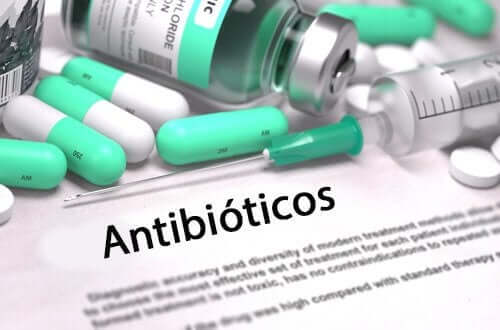Is it Possible to Be Reinfected by Coronavirus?


Written and verified by the doctor Elisa Martin Cano
The coronavirus crisis continues to keep health alerts active in many countries. News sources are reporting more and more cases around the world daily. But what if you have already had coronavirus? Is it possible to be reinfected by coronavirus?
Here are some general facts about this issue and what happens after infection.
What is a coronavirus?
Coronaviruses are a family of viruses that usually affect animals. There are many different types within this family. Some of them can mutate and end up infecting people.
This is the case with the SARS-CoV-2 strain. This strain first appeared in the Chinese city of Wuhan in December 2019. Since then, its ease of spread has led to a dramatic increase in the number of cases worldwide.
What symptoms does it produce?
For most people who get the infection, coronavirus is an asymptomatic infection. That is, the person doesn’t show any signs to show that they are sick. Most commonly, especially in children, it produces mild, nonspecific symptoms such as a cold.
The most obvious symptoms are:
- Dry cough
- Fever
- Shortness of breath
- It can also cause muscle pain, tiredness, and general discomfort. However, this is not always the case.
- In a minority of cases, this virus can lead to pneumonia or even death from respiratory failure. These cases occur mainly in at-risk groups such as the elderly, or those with a depressed immune system.

How does the coronavirus transmit?
Transmission of the virus between people occurs through small particles that travel in the air. When an infected person coughs or sneezes, the particles may travel 1 or 2 meters (3-6 feet). The virus can spread even when the infected person has no symptoms.
These particles can remain on everyday objects such as tables or doorknobs, or they can fall directly on someone. When an uninfected person touches an infected object and then touches his or her hands, nose, or mouth, then the virus can enter.
You may be interested in: How to Avoid Catching and Spreading Coronavirus
Can coronavirus be treated?
Although there’s no specific curative treatment for this virus yet, scientists are testing some antiviral agents, particularly for use in severe cases. The most important thing at present, therefore, is simply to prevent infection.
The current treatment is for the symptoms only. Doctors treat it with painkillers and medicines for fever if the patient has one. We must remember that this is a virus, so antibiotics will never be effective, and it’s a mistake to use them as prevention or treatment.

You may be interested in: Coronavirus Disease (COVID-19) Symptoms
Is it possible to be reinfected by coronavirus?
As we’ve already mentioned, most of the time the infection occurs asymptomatically or with mild symptoms. The mortality of the virus is very low, currently ranging from 1.4 to 2.1%. This means that, in almost all cases, the person will go through the illness without any major complications.
But what happens next?
Is it possible that a person who has already had coronavirus can become infected again?
Since it’s a new strain, we still have a lot to learn. Even so, so far all new cases are in people who have been infected for the first time. There’s no official record of anyone getting coronavirus again. This means that, even though we have little information about it, experts, based on the data we have so far, suspect that it’s very unlikely that the same person could get the same disease twice.
Footnote
In the face of this situation, which is so new to everyone and so serious too, the important thing is to remain calm. Heeding the instructions of the health authorities and trying as much as possible to carry out the precautionary measures that are in our hands are the urgent steps we should be taking.
All cited sources were thoroughly reviewed by our team to ensure their quality, reliability, currency, and validity. The bibliography of this article was considered reliable and of academic or scientific accuracy.
- COVID19_como_protegerse.jpg (1440×1440) [Internet]. [cited 2020 Mar 13]. Available from: https://www.mscbs.gob.es/profesionales/saludPublica/ccayes/alertasActual/nCov-China/img/COVID19_como_protegerse.jpg
- COVID19_higiene_manos_poblacion_adulta.jpg (800×2000) [Internet]. [cited 2020 Mar 13]. Available from: https://www.mscbs.gob.es/profesionales/saludPublica/ccayes/alertasActual/nCov-China/img/COVID19_higiene_manos_poblacion_adulta.jpg
- Wu F, Zhao S, Yu B, Chen Y-M, Wang W, Song Z-G, et al. A new coronavirus associated with human respiratory disease in China. Nature. 2020 Feb 3;
- Xu Z, Shi L, Wang Y, Zhang J, Huang L, Zhang C, et al. Case Report Pathological findings of COVID-19 associated with acute respiratory distress syndrome. Lancet Respir [Internet]. 2020 [cited 2020 Mar 13];2600(20):19–21. Available from: http://dx.doi.org/10.1016/S2213-2600(20)30076-X
This text is provided for informational purposes only and does not replace consultation with a professional. If in doubt, consult your specialist.








